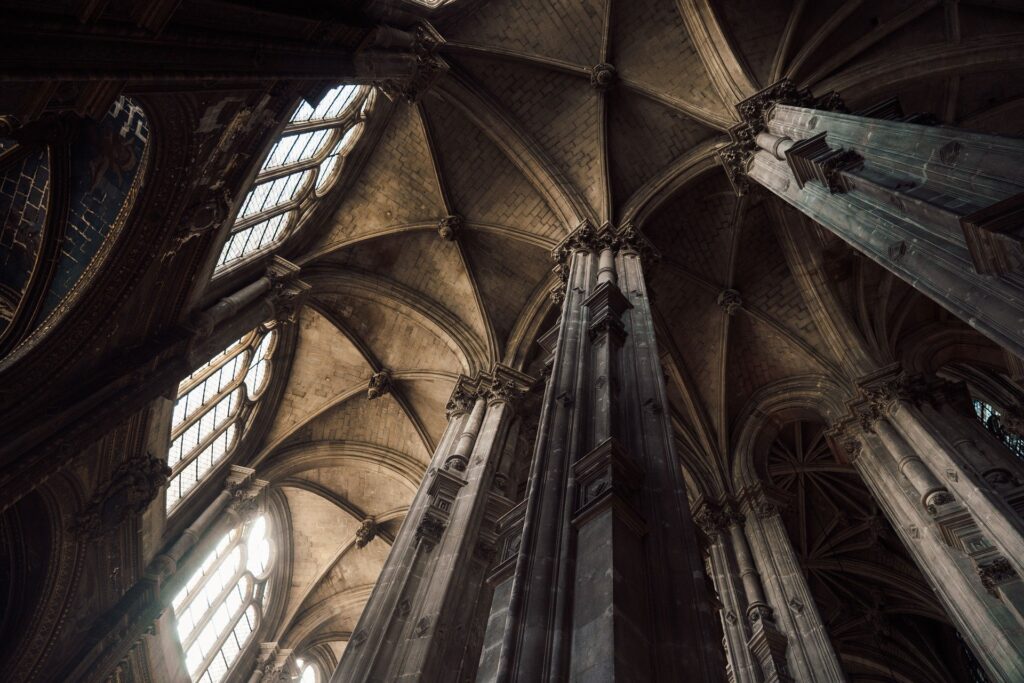There may be times when you want to place a type of dome at the top of a building, but you may not know how since the building is square or rectangular. Well, if you have that issue, or think that you may in the future, then you are going to want to brush up on your pendentives skills. Pendentives are basically a construction device that will allow you to place a round dome on top of a square room or a dome that is elliptical shaped on top of a rectangular room.
The pendentives are basically triangular segments and they taper down to a point at the very bottom. The tops are spread out to create the base that is needed for the type of dome you want to use. This method was finally created after many years of using squinches within the corners of any room.
Pendentives are usually intricately designed with many unique details and there are normally four of them for every dome. The goal of pendentives is to make the dome look like it is hanging in the air, basically like a pendant, which is where the word pendentives comes from. The four pendentives create a visual story within the dome and many people find themselves breathless or simply mesmerized once they walk inside and begin to look around.
Pendentives Geometry
Pendentives have been in the works since Roman times, but it wasn’t until the Byzantine era that the structural intricacies were fully appreciated. It was at this time that they realized that the diameter of the dome being used needed to be the same length as the diagonal part of the room. This was not as easy to understand or know back then, so a lot of hard work had to go into figuring out this problem and finding the solution that would work the best.
Prior to figuring this out, many of the supporting structures in buildings with domes needed to be round. A prime example of this would be the Pantheon in Rome. Of course, this limited the height of the domes, as well as the widths.
What the Pendentives Do
Once the pendentives are in place, they take all the outward force from the weight of the dome. That weight goes to the four corners before flowing down the columns towards the foundation. High support walls are not needed when you use a pendentive, so you do no need to worry about views being obscured. One of the best examples of a pendentive is the Hagia Sophia cathedral, which is in Constantinople.
Creating a Model of a Pendentive
If you have never constructed a pendentive before, or seen one being installing when placing a dome on top of a building, you may want to create your own model first.
Step One
A pendentive has three forms and they are a large sphere, a cube that fits into that sphere, and the cylinder that fits into the cube. Each one needs to touch the other in order for this to work properly.
Step Two
When you go to construct the pendentive, you will start by carving the volume of the sphere. You must take out the cylindrical volumes, of which there are three. Those three include the two from the inside and sides and the one from the center. You must find the exact spots of those three cylinders, so you can determine the exact volume to subtract.
Step Three
You will not need the cube after you find the volumes above, so you can remove that from your model.
Step Four
The last step is simply removing the bottom of the new volume that you found, because that will show you the final shape of what your pendentive will, and should, look like.
Newer Forms of Pendentives
While pendentives have been used for centuries, they are popping up in newer buildings everywhere. Many state capital buildings use pendentives within their rotundas, especially those that have huge panoramas for people to see.
The Gettysburg Visitor Center in Gettysburg, Pennsylvania is one of those buildings. They have a massive panoramic scene of the Civil War that people can see, and this wouldn’t have been possible without the help of pendentives.
While pendentives took over for squinches, it is probably just a matter of time before pendentives are either improved even more or replaced with something new and altogether better. This isn’t to say that pendentives are going anywhere anytime soon, but with a little fine tuning, they can eventually be better than ever!




